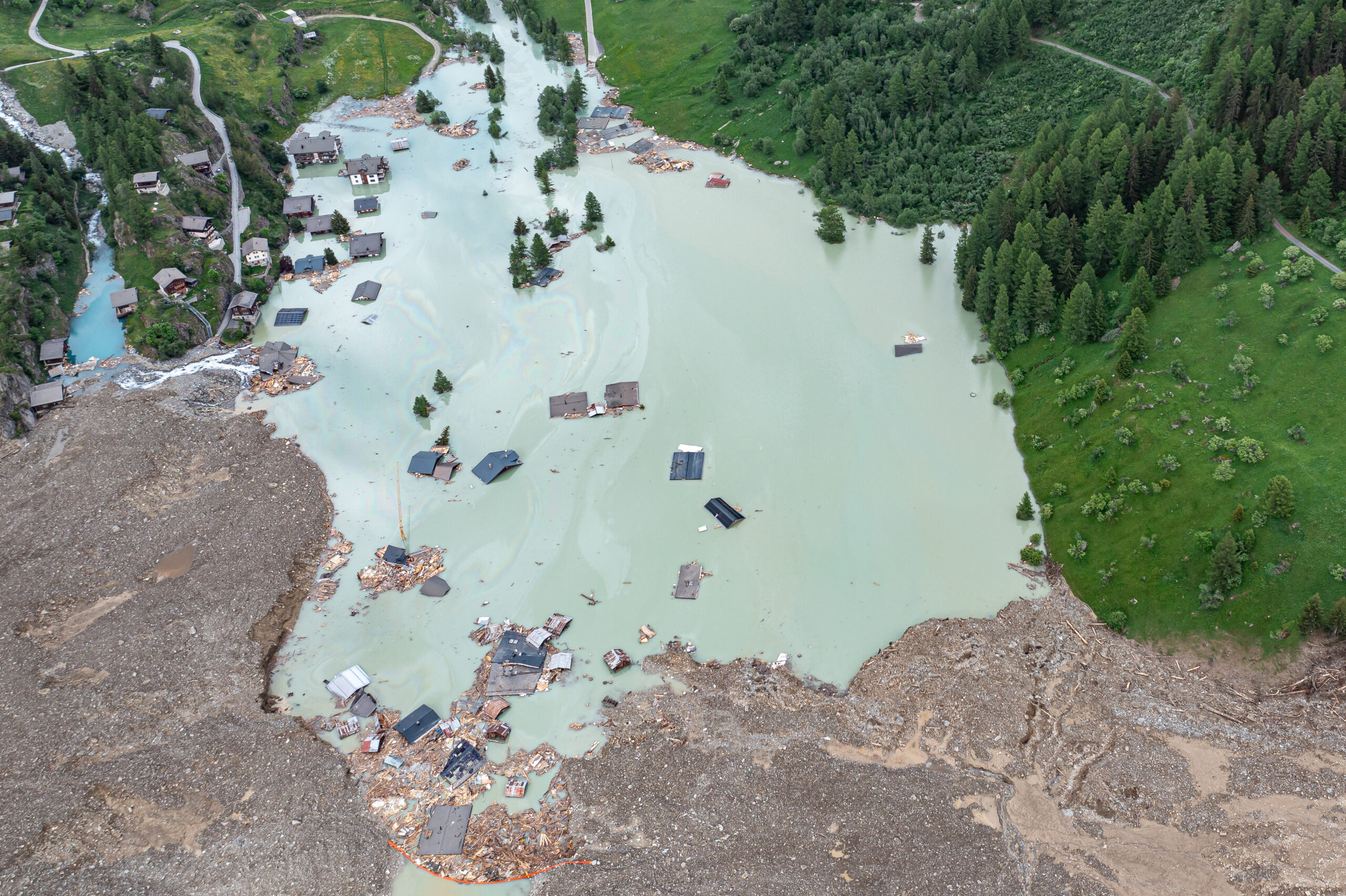For analysts at Fitch Ratings, the recent demolition of a Swiss village by a glacier is fresh proof that climate change is altering the laws of mortgage risk.
The world looked on in shock last month as 3 million cubic meters of rock and mud buried the Swiss village of Blatten. The Alps are already about 2C hotter than they were at the time of the industrial revolution, meaning glaciers are continuing to thaw at a dangerous pace. And with global warming currently on track to be roughly double the critical threshold of 1.5, scientists warn that the risk of property damage caused by floods, mudslides, fires and storms is growing by the day.
“We expect physical climate events to happen more frequently and with more intensity,” Will Rossiter, a director of enhanced analytics at Fitch, said in an interview. And “the impact that they’re having on a greater number of assets within a portfolio could increase.”
Against that backdrop, Fitch is now in the process of integrating physical climate risks into credit assessments. The move reflects an evolving concern among ratings firms and regulators alike that climate change is hitting the mortgage market — and the bonds that finance it — in ways that have yet to be adequately reflected in valuations. What happened in Switzerland should serve as a reminder that when climate shocks hit, their impact can be devastating, Rossiter said.
“The value of those properties has gone from whatever it was to nothing essentially overnight,” he said.
The physical fallout of climate change has implications for corners of fixed-income markets traditionally viewed as among the safest in the world. That includes the $3.4 trillion covered bond market, according to the European Banking Authority. The EBA has just unveiled a proposal to have banks issuing covered bonds disclose the climate-related risks of the underlying assets, with a particular focus on energy consumption.
The idea behind the disclosures is “to understand the potential risks” with regard to how environmental threats “impact the solvency of the institutions and the liquidity of institutions,” Pilar Gutierrez Rodriguez, head of reporting at the EBA, said in an interview.
Mathias Pleissner, deputy head of covered bonds at Scope Ratings, says “additional disclosure will help to better understand and isolate climate risks allowing for a better discrimination amongst issuers.” He also says “disclosure is only the beginning.”
At the same time, Pleissner says banks that can show they’re taking such risks seriously stand to be rewarded by investors and regulators. For example, covered bonds with solid climate metrics may get preferential treatment in the European Central Bank’s assessments of the collateral that it accepts as part of its credit operations, he said.
Covered bonds have long been considered among the safest of securities, because of what’s known as dual recourse. If an issuer fails, bondholders have a direct and preferential claim to the underlying collateral as well as an ordinary claim against the lender. The bonds’ unique legal structure has resulted in consistently high credit ratings.
However, there are currently no requirements under the Covered Bond Directive to disclose climate-related data. The EBA says the time has come for “increased transparency” around climate risk, as part of a larger consultation targeting expanded environmental, social and governance metrics in general disclosure requirements. A separate EBA report is due to be published in the coming weeks with recommendations to the European Commission on rewriting the covered bond directive.
The industry says there’s a growing awareness around such concerns.
Luca Bertalot, general secretary of the European Mortgage Federation-European Covered Bond Council, says some banks made “a huge investment” in recent years to allow a “proper analysis” of mortgage portfolios.
And the head of the ESG program at Deutsche Pfandbriefbank, Andreas Wuermeling, says there’s an awareness that higher ESG risks “lead to higher spreads,” so the bank’s “business strategy is based on ambitious green portfolio levels,” combined with “ongoing identification of ESG risks in the lending portfolio and consistent selection of deals to minimize ESG risks.”
Pleissner of Scope Ratings says he expects European regulators and other stakeholders “will ensure” there’s growing focus on such risks.
Photograph: Rubble and ice fill in part of the Loetschental valley following a landslide at Blatten, Switzerland. Photo credit: Robert Hradil/Getty Images
Copyright 2025 Bloomberg.
Topics
Trends
Interested in Trends?
Get automatic alerts for this topic.





Leave a Reply